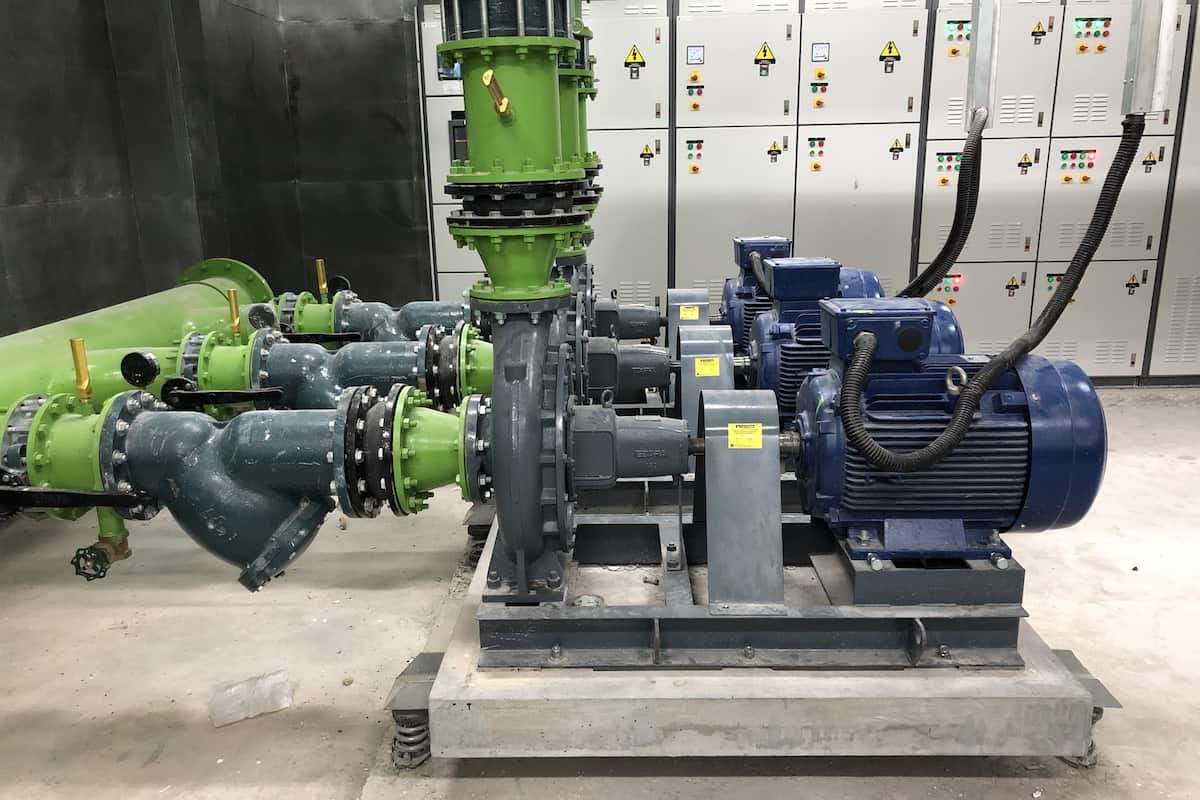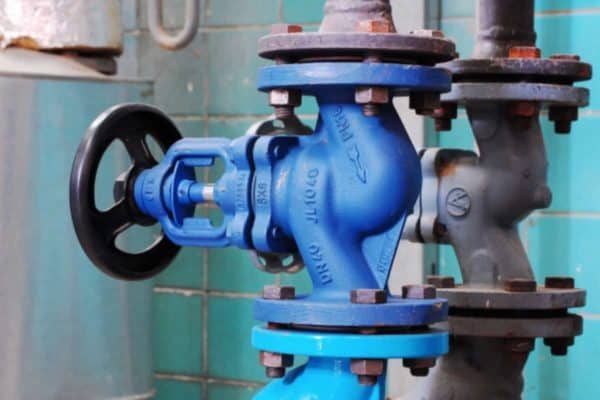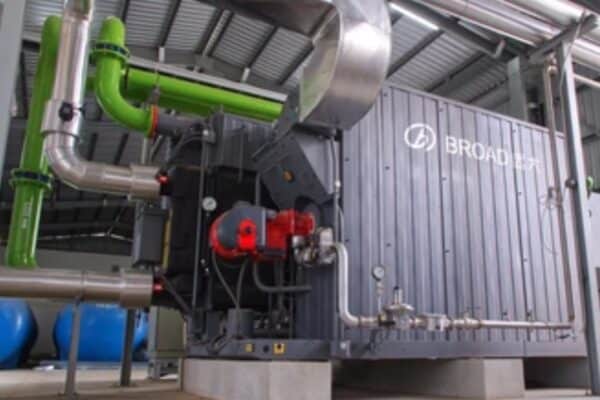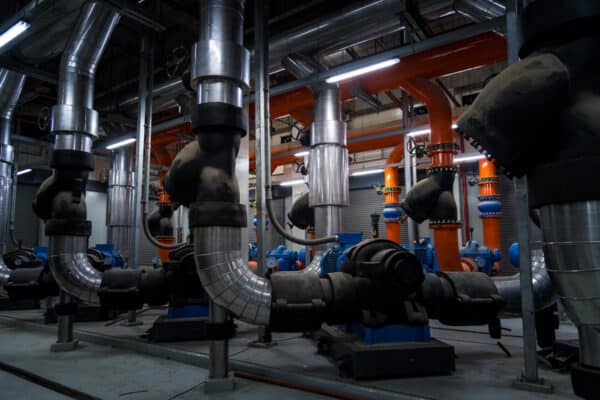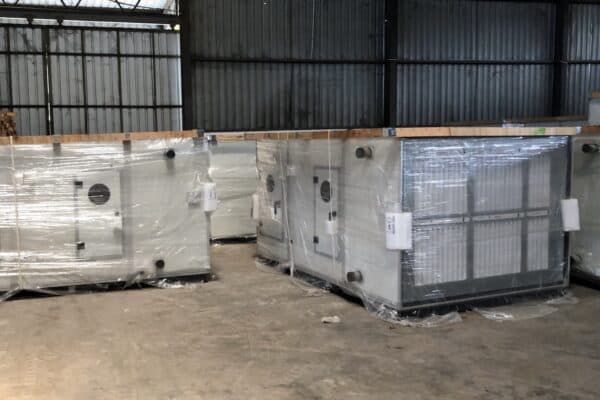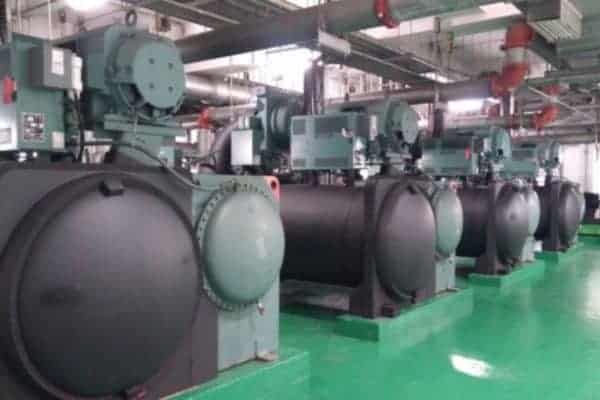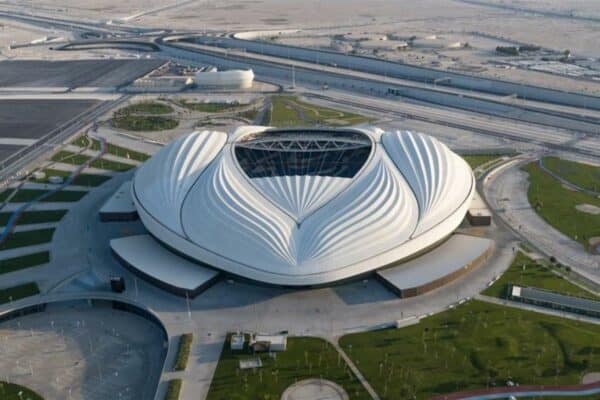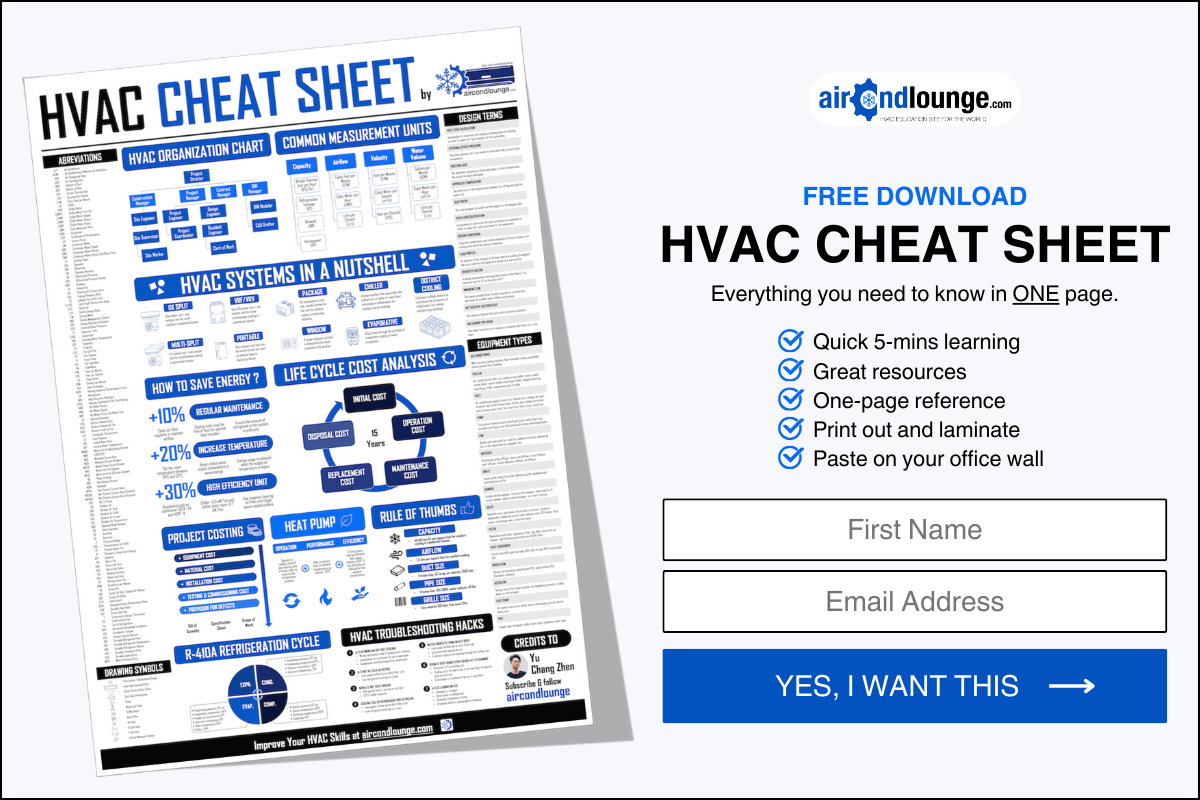What is Net Positive Suction Head? (Centrifugal Pump)
A sufficient net positive suction head is one of the requirements of centrifugal pumps. Without it, centrifugal pumps will not move water and cavitation may occur thereby damaging the pumps. So, I did some research to explain what is net positive suction head.
Net positive suction head (NPSH) is the final water pressure at the inlet of a centrifugal pump. Every centrifugal pump has a required suction pressure and the water pressure at the inlet of the pump must be more than the pump’s required suction pressure in order for the pump to run properly.
The pump’s required suction pressure is known as net positive suction head required (NPSHR) and the water pressure at the inlet of the pump is known as net positive suction head available (NPSHA).
So, in order for a centrifugal pump to run properly, net positive suction head available (NPSHA) must be greater than net positive suction head required (NPSHR).
Condenser water pumps are prone to insufficient NPSHR especially when no maintenance is being carried out for quite some time. Clogged strainers and dirty condenser pipes may increase the suction piping pressure drop and thus, reduce the NPSHA.
Meanwhile, chilled water pumps, which operate in a closed-loop piping system, are filled with sufficient water pressure and thus, net positive suction head is not a concern.
Net Positive Suction Head Available (NPSHA) vs Net Positive Suction Head Required (NPSHR)
Net positive suction head required (NPSHR) is part of the performance of a centrifugal pump. Most of the time, it is given by the manufacturer of the centrifugal pump. Different pump models have different NPSHR.
On the other hand, net positive suction head available (NPSHA) needs to be calculated by engineers. The formula to calculate NPSHA is as follow:
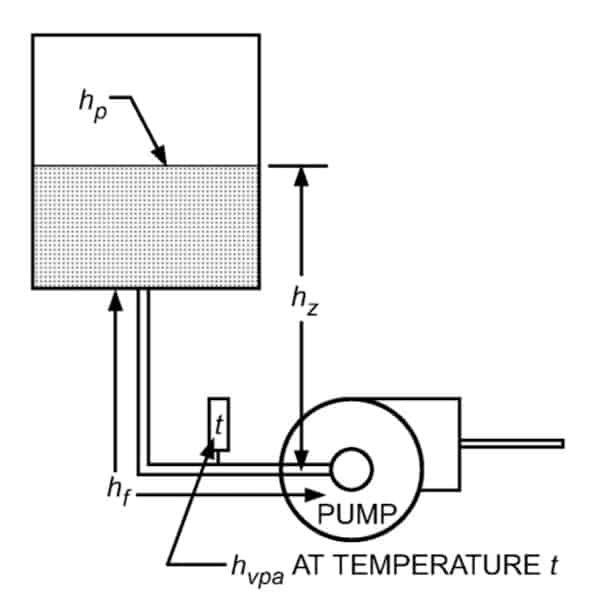
NPSHA = hp + hz – hvpa – hf
where,
hp = absolute pressure at the surface of the liquid
hz = water height measured from the center of the pump inlet
hvpa = absolute vapor pressure
hf = head loss in suction pipe line
If NPSHA is not sufficient, meaning NPSHA is less than NPSHR, cavitation may occur at the pump impeller thereby causing damage to the impeller and unwanted noise.
Why Net Positive Suction Head Available (NPSHA) Must Be More Than Net Positive Suction Head Required (NPSHR)?
As mentioned earlier, if NPSHR is not fulfilled, cavitation may occur. But, why does cavitation occur when NPSHA is less than NPSHR?
Cavitation occurs when some of the liquid water turns into vapor (bubble). At the pump impeller, thousands of bubble bursts can cause damage to the impeller blades. Over time, the impeller can puncture and the pump can fail entirely.
So, why does liquid water turn into vapor at the pump inlet?
In order for liquid water to change into vapor, either we increase the temperature of the water or reduce the pressure of the water. In the case of a centrifugal pump, low water pressure is causing the formation of water vapor (bubble).
Watch a chemist explain how cavitation occurs by demonstrating it with a simple experiment: https://youtu.be/ON_irzFAU9c?t=25
Hence, in order to prevent cavitation, we must maintain positive pressure at the pump inlet. In other words, we must ensure that the water is “pressed” against the centrifugal pump.
The entire pipeline before the pump inlet has a certain amount of water pressure. However, the water pressure can be reduced by the pipe friction loss and valves & fittings pressure drop. So, we must ensure there is a net positive suction pressure or head available (NPSHA).
On a side note, if you want to quickly learn about chilled water system, you can get my Chilled Water System (eBook). If you’re into design, you can enroll in my Chilled Water System Design Course where I teach you various design procedures with tons of examples.
Chilled Water System Design Course
Learn how to design a chilled water system with AHU/FCU selection, chiller sizing, cooling tower sizing, pump sizing, piping design, ductwork design and more.
How to Increase Net Positive Suction Head Available (NPSHA)?
In HVAC, condenser water pumps can be installed either next to chillers or next to cooling towers. Condenser water pumps installed next to chillers are usually located on lower floors. Meanwhile, condenser water pumps installed next to cooling towers are mostly located at the top level.
When a condenser water pump is installed on a lower floor, it often has sufficient net positive suction head due to the huge amount of condenser water coming down from cooling towers.
However, when a condenser water pump is placed at the roof level, next to cooling towers, it is prone to insufficient net positive suction head. Nevertheless, there are a few ways to mitigate the problem.
1. Clean the Strainer Regularly
Strainers are used to trap dirt and thus, protect condenser water pumps from getting damaged. Hence, they are mostly placed right before the pump. However, dirty strainers can cause high pressure drop and low suction pressure.
Based on the NPSHA formula, if hf is increased, NPSHA is reduced. Hence, NPSHA may be lower than NPSHR and cavitation may happen if the strainers are not checked and cleaned regularly.
2. Reduce the Water Velocity
According to Bernoulli’s principle, the higher the water velocity, the lower the water pressure. Hence, if the condenser water flow speed is too high, the suction pressure can be too low and cause cavitation.
Therefore, the condenser water velocity should not exceed 10 fps (feet per second) and it is advisable to limit the water velocity at 5 fps by using one or two sizes bigger pipe size than the inlet nozzle of the pump.
In addition, you might notice that in centrifugal pumps, especially the large capacity ones, the inlet nozzle is always bigger than the outlet nozzle in the effort of reducing the risk of cavitation.
3. Increase the Water Height
Problematic condenser water pumps can be relocated to a few floors below the cooling towers to increase the water height before the pump inlet and thus, increase the net positive suction head available (NPSHA).
Based on the NPSHA formula, if hz is increased, NPSHA is increased. In addition, increasing the water height of cooling tower basins may help but this solution is limited and sometimes, not practical.
4. Prevent Vortex from Forming at the Basin of Cooling Towers
Strong suction can cause a vortex to form at the basin of cooling towers. If the water vortex is severe, air can be sucked into the pipeline and trapped inside the suction line. With trapped air, less water is going to the pump inlet thereby causing insufficient NPSHA.
To prevent vortex from forming at the basin of cooling towers, use larger pipes to reduce the water velocity. Otherwise, make sure air relief valves are installed to purge out any trapped air at the highest point.
Insufficient Net Positive Suction Head Problems in Hot Water System
Hot water recirculating pumps often experience problems with cavitation and low hot water return flow rate (or even zero hot water return). Sometimes, it is due to insufficient net positive suction head.
Many people don’t realize that the hot water system in buildings such as hotels, hospitals and shopping malls is actually an open-loop piping system rather than a closed-loop piping system.
When there is no demand for hot water, the system is in a closed-loop state. However, once there is a tap open for hot water usage, the system suddenly switches to an open-loop state.
Many engineers design the location of hot water recirculating pumps to be the same as calorifier tanks or inside the hot water plant room. Usually, the hot water plant room is located on the top floor so that hot water can distribute via gravity flow.
In a closed-loop state, hot water recirculating pumps have no problem “sucking” hot water. However, when the system turns into an open-loop state, water pressure in the suction line drops rapidly, causing immediate short of net positive suction head available (NPSHA).
Hence, hot water recirculating pumps must always be located on the lowest floor. They should be “pushing” the hot water rather than “pulling” it so that cavitation can be avoided.
Nevertheless, if the hot water supply booster pumps have sufficient head to overcome the rapid pressure drop in the open-loop state, placing the hot water recirculating pumps in the plant room should be fine.
Even so, keep in mind that hvpa (absolute vapor pressure) is part of the equation to calculate NPSHA and the higher the water temperature, the higher the vapor pressure. So, NSPHA is reduced when the water temperature is increased.
Once again, you can get my Chilled Water System (eBook) to quickly learn more about chilled water system. But, if you want to learn how to design a chilled water system from start to end, I encourage you check out my Chilled Water System Design Course.
Chilled Water System Design Course
Learn how to design a chilled water system with AHU/FCU selection, chiller sizing, cooling tower sizing, pump sizing, piping design, ductwork design and more.
If you have anything to add (or ask) about this topic, leave a comment down below!


